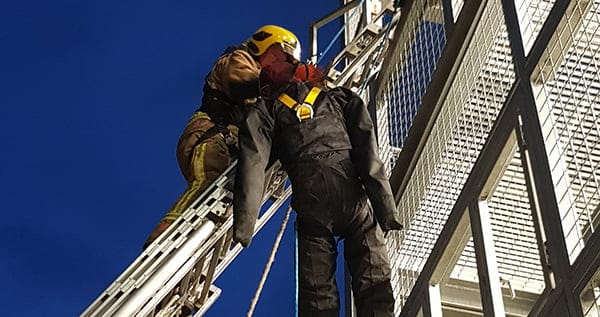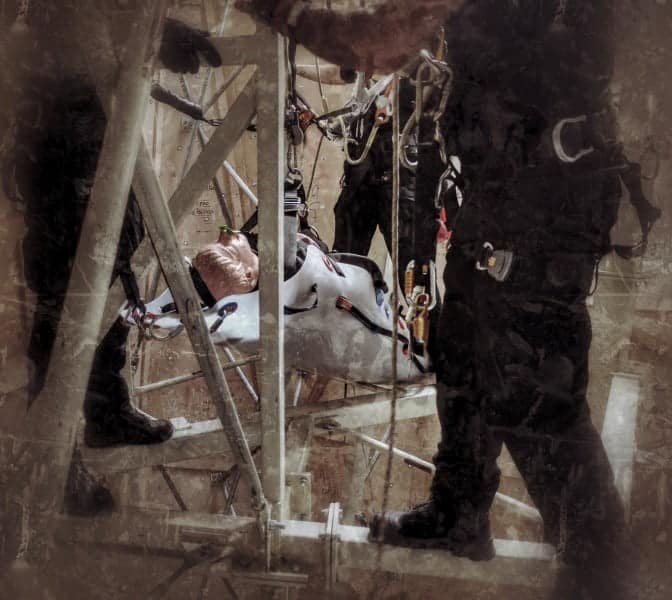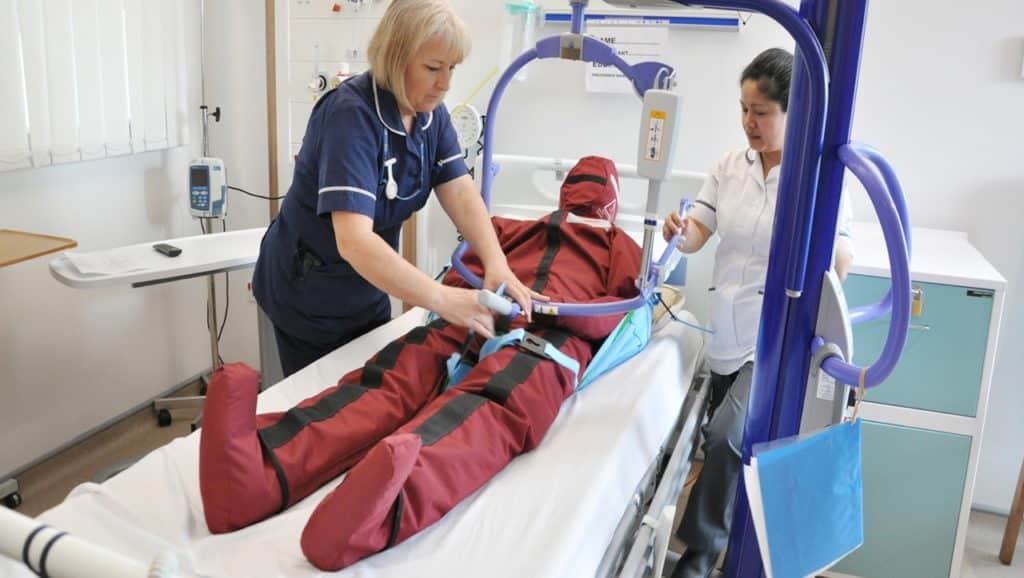The safety of your team must always be the number one priority of any training scenarios.
Whether you are teaching a group about working at height rescues, or about the most effective ways to move a bariatric patient in a care setting, maintaining the health and wellbeing of those taking part is equally as important as passing on those essential skills.
Addressing ‘THAT’ question…
One question we commonly get asked at Ruth Lee Ltd is “Why would I use a manikin when I can ask for a volunteer in the group?”
When budgets are stretched it can seem like the most logical thing in the world to use a ‘volunteer’ to act as the casualty in any given training scenario.
Think again!
Using a live volunteer can open you and your business up to all kinds of potential pitfalls – especially with a relatively green bunch of staff who are learning the ropes.
It makes sense when people are learning the ropes to use a manikin. That way, if anything goes wrong, it is only the dummy which suffers! You can always switch to a volunteer once you are confident the skills have been mastered – that way ensuring you also get some ‘live’ feedback on the techniques used.
Listening to expert opinion
We don’t pretend to be experts in rescue training or manual handling techniques – but over the years we have built up excellent relationships with our customers (many of whom we now count as friends) who are experts in their field. It is their expertise which guides us in making the best possible training manikins.
It is also their opinions we listen to when the question of ‘why use a manikin’ crops up in conversation. The common consensus amongst our expert friends is that using a manikin is especially beneficial in the early stages of training. For example; during a working at height rescue training scenario you would not want to risk a live volunteer whilst the trainees figure out the best possible extrication techniques.
Don’t open you or your employer up to unnecessary risk
Likewise, in a manual handling scenario, the argument “using a live volunteer means they can feedback if they get hurt” rings alarm bells with us! Why on Earth would you open yourself up to the risk of complaint of injury caused through the training you are conducting?
Surely the safest and most professional way to conduct training is to start ‘rookies’ off on lifting and handling techniques using a manikin (whether that training be using a hoist, or just moving the patient from a bed to a wheelchair) and once you are confident that they are proficient enough, then move to a volunteer?
Training with manikins has many benefits…
Training with manikins has many benefits. Not only does it mean that you are minimising the risk of injury to those taking part in the training, but it also means that all participants are actively learning the techniques required. If you are just lying around waiting for other people to practice, it can hardly be called effective learning!
Using a manikin also gets rid of any embarrassment for the volunteer.
Let’s face it, if being completely honest, how many people would feel totally comfortable with being physically handled by their colleagues in an intimate way? We’d be confident to guess at ‘not many’! We’ve all experienced that awkward laugh when people are nervous and embarrassed – hardly professional – though very understandable.
Thinking about other examples – you wouldn’t ever ask for a child to volunteer, in either a lifting and handling scenario, or a rescue training exercise. Aside from safeguarding issues, it is more likely that a young person wouldn’t understand the seriousness of the training and would either play up or move at the least opportune moment.
Returning briefly to the embarrassment issue – how would you address the need to carry out bariatric training? It is hardly fair to ask whoever is perceived to be the fattest in a group of people to volunteer to be the bariatric casualty!
Scenario training – scenario manikins
Of course, not all solution fits all. That’s why we have a full range of training manikins available at Ruth Lee Ltd, all of which have been designed with specific sector training in mind.
From Patient Handling and Bariatric manikins for those working in the health and social care industries, to multi-trauma, confined space or working at height dummies for technical rescue training scenarios. We are confident we will have the right manikin to improve your training.
Manikins really do come in all shapes and sizes, with models ranging from a 5 kg baby, right the way up to a 260kg adult. We know that human beings come in a massive variety and we make sure our dummies do to.
So, the next time a budget holding manager asks you “why use a manikin?” – you can confidently reply “Why NOT use a manikin?”


